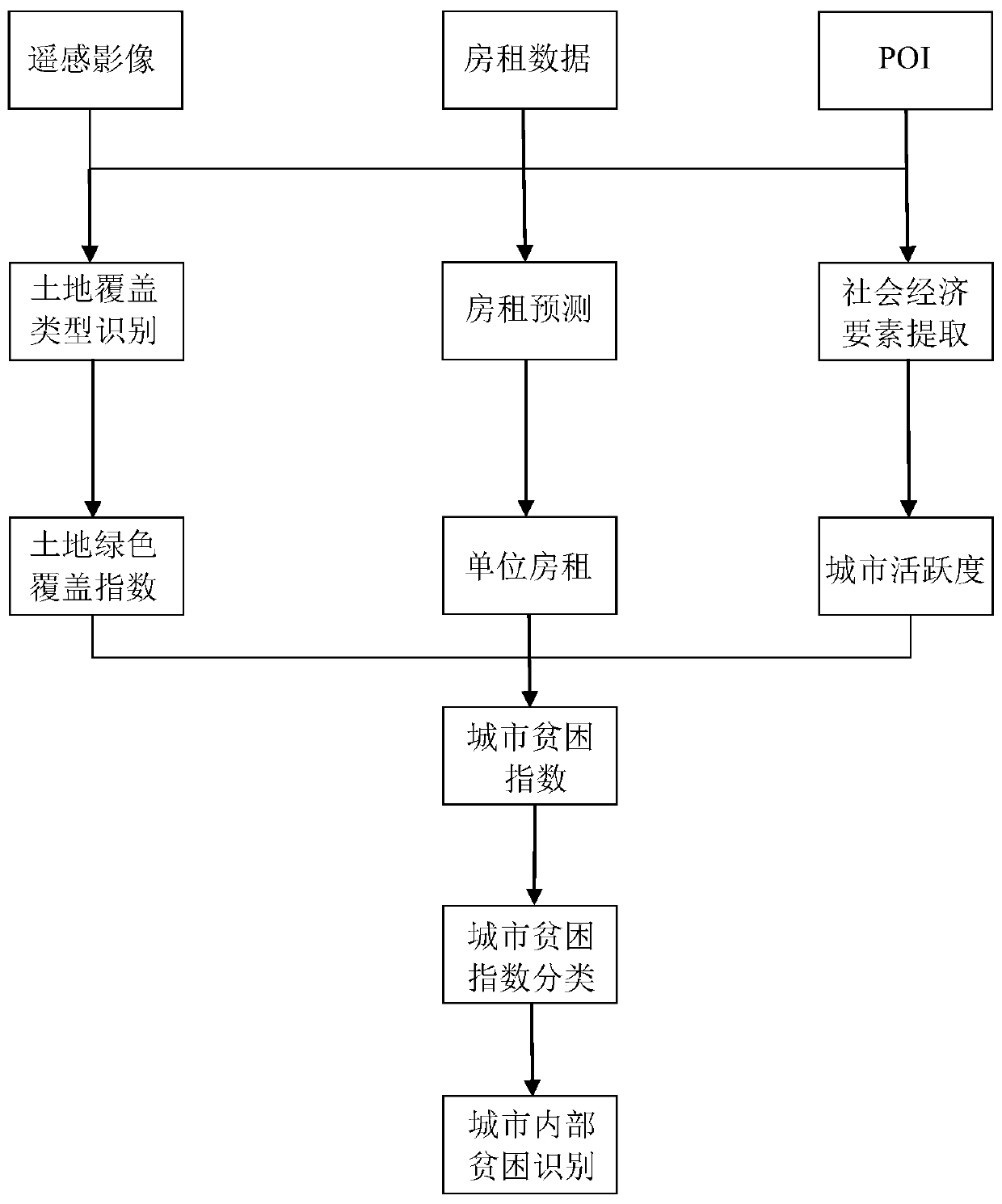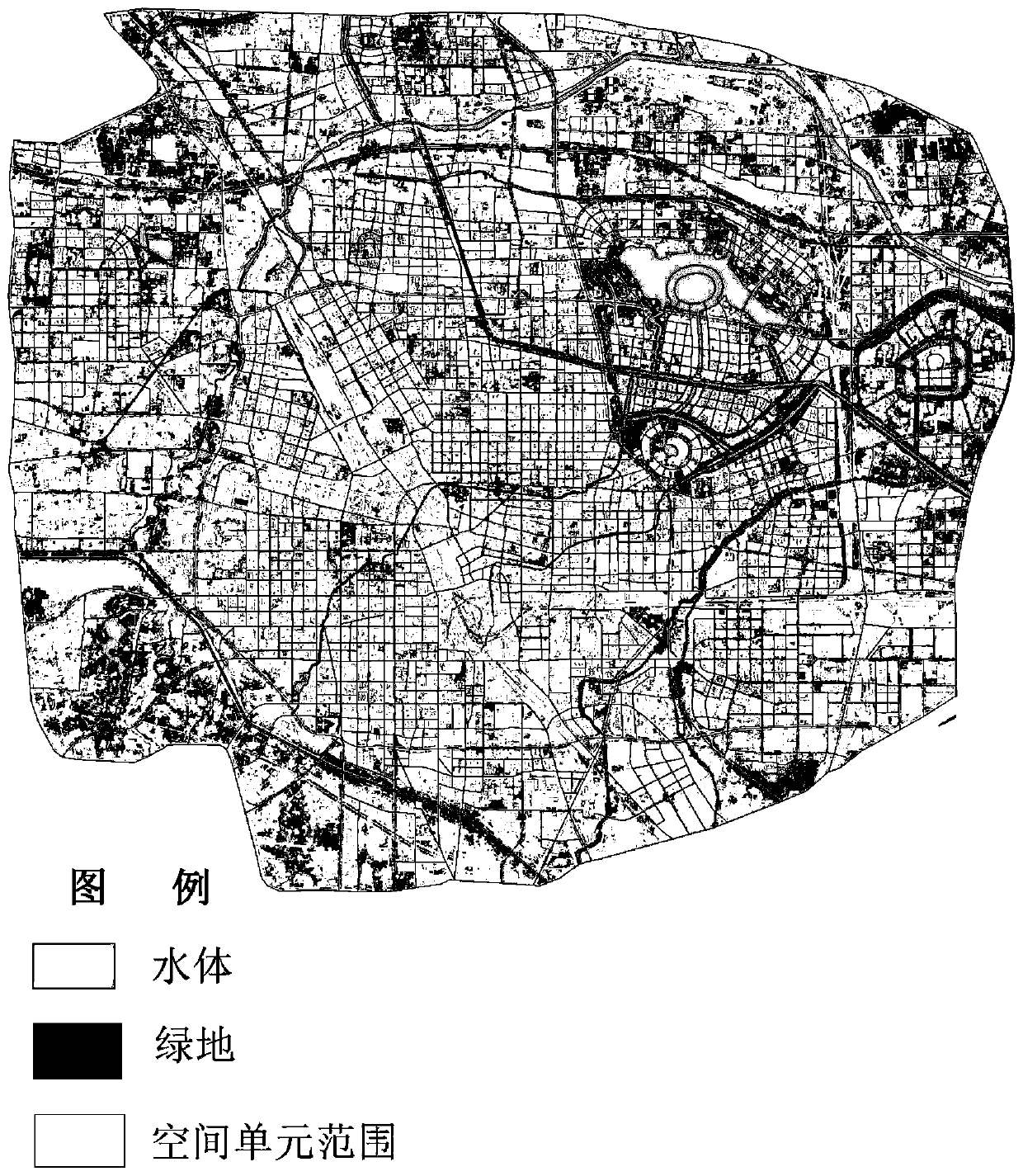A poverty space classification recognition method and device based on big data and machine learning
A machine learning, classification and recognition technology, applied in the field of geographic information technology and big data analysis, can solve the problems of high efficiency, small amount of data, inability to identify remote sensing data of lights at night, etc., and achieve the effect of strong operational feasibility and accurate identification.
- Summary
- Abstract
- Description
- Claims
- Application Information
AI Technical Summary
Problems solved by technology
Method used
Image
Examples
Embodiment 1
[0053] This embodiment provides a spatial classification and recognition method for urban poverty based on big data and machine learning. For the basic process, please refer to figure 1 , the specific implementation further clarification includes:
[0054] Step 1: According to the obtained high-precision remote sensing satellite images, divide the city into regions, divide the urban region into the smallest spatial units composed of several grids, and calculate the area Z of each smallest spatial unit;
[0055] Based on high-precision remote sensing satellite images, the range of the smallest space unit is divided. The division of space units should be based on the area enclosed by the smallest residential unit or the last road. The area enclosed by each smallest residential unit or the last road The area is a minimum space unit, figure 2 It is the map of the minimum spatial unit range divided according to the end-level road enclosure and the minimum residential unit, and th...
PUM
 Login to View More
Login to View More Abstract
Description
Claims
Application Information
 Login to View More
Login to View More - R&D Engineer
- R&D Manager
- IP Professional
- Industry Leading Data Capabilities
- Powerful AI technology
- Patent DNA Extraction
Browse by: Latest US Patents, China's latest patents, Technical Efficacy Thesaurus, Application Domain, Technology Topic, Popular Technical Reports.
© 2024 PatSnap. All rights reserved.Legal|Privacy policy|Modern Slavery Act Transparency Statement|Sitemap|About US| Contact US: help@patsnap.com










